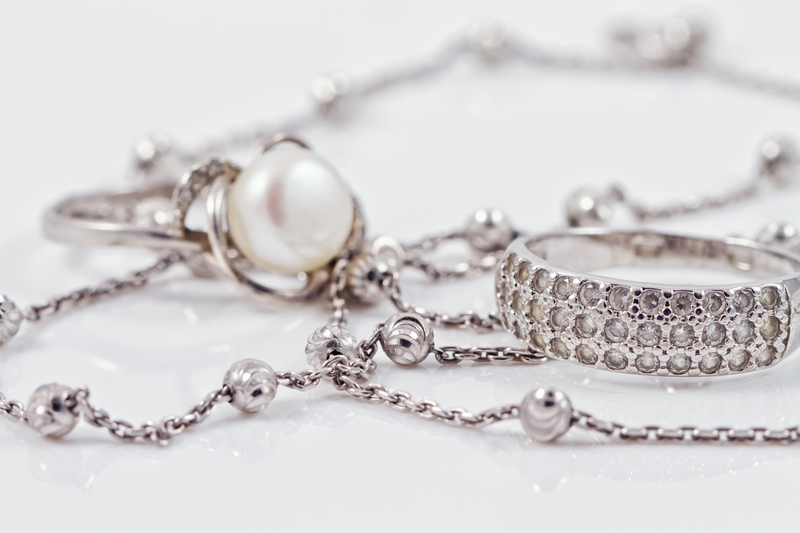Keep Your Sofa Pristine: Long-Term Storage Expert Advice
Posted on 19/06/2025
Keep Your Sofa Pristine: Long-Term Storage Expert Advice
Your sofa is more than just a piece of furniture--it's the heart of your living room, a cozy refuge after a long day, and often a significant investment. When circumstances require you to store it for an extended period, taking the right steps is crucial to maintain its comfort and elegance.
Whether you're relocating, renovating, downsizing, or simply need to free up space, mastering the art of sofa long-term storage can be the difference between sitting pretty and facing costly repairs or replacement. In this comprehensive guide, we deliver professional advice and proven methods for keeping your sofa fresh, protected, and pristine throughout any long-term storage scenario.
Why Proper Sofa Storage Matters
Improper storage can lead to a host of issues such as mold growth, fabric discoloration, structural damage, and musty odors. Long-term sofa storage requires more than simply throwing a sheet over it; it demands careful planning and correct execution. By learning how to keep your sofa pristine in storage, you'll protect both its value and fluff-factor for years to come.
Main Risks of Poor Sofa Storage
- Mold and Mildew: Moist environments foster unwanted fungi, which love to inhabit fabric fibers and foams.
- Pest Infestation: Rodents and insects may nest inside sofas, causing structural and sanitary damage.
- Odors: Trapped moisture or dirt can cause stubborn smells in upholstery.
- Stains and Fabric Damage: Dust, spills, or exposure to sunlight and humidity degrade fabrics and finishes.
- Structural Warping: Fluctuations in temperature and humidity can distort wooden frames or cause joints to loosen.

Step-by-Step Guide: How to Store Your Sofa for Long-Term Pristine Condition
If you want to preserve your sofa in storage so it emerges just as beautiful as it went in, follow this expert-backed, step-by-step regimen.
1. Choose the Right Storage Location
The best place to store a sofa long-term is a clean, dry, and climate-controlled environment. This dramatically reduces the risk of moisture, temperature swings, and pests.
- Preferred Location: Indoor, climate-controlled self-storage units are ideal. Avoid storing sofas in garages, basements, or sheds that are susceptible to rain, leaks, temperature extremes, or critters.
- Off the Ground: Elevate your sofa on pallets or sturdy blocks. This prevents ground moisture from seeping into the frame or fabric and allows for better air circulation beneath the furniture.
2. Thoroughly Clean and Prep Your Sofa
Never store a dirty sofa. Crumbs, grease, and dust attract pests and can stain or damage fabric during storage.
- Vacuum: Start by removing all cushions and meticulously vacuuming every surface, nook, and cranny--including underneath the cushions and the frame.
- Spot Clean: Use fabric-appropriate cleaners for spills or stains. Consult manufacturer care labels for upholstery-specific advice.
- Leather Care: Use a high-quality leather cleaner and conditioner to keep the material supple and prevent cracking.
- Deodorize: For lingering smells, sprinkle a light layer of baking soda on the fabric, wait 15 minutes, and thoroughly vacuum it up.
- Dry Fully: Ensure the sofa is completely dry before packing. Trapped moisture leads to mold.
3. Disassemble If Possible
Take advantage of your sofa's modularity. Disassembling your sofa for long-term storage not only makes it easier to move but also allows you to protect delicate parts more effectively.
- Remove legs, cushions, and detachable arms. Place all hardware in clearly labeled zip-top bags.
- Fold-out beds or recliners should be closed and secured to prevent accidental movement.
4. Protect and Cover
The right materials matter when it comes to protecting your sofa in storage. The goal is to shield surfaces without trapping moisture inside.
-
Use Breathable Covers:
- Wrap the sofa in cotton sheets or moving blankets. Avoid plastic directly against fabric, as it fosters moisture, which can lead to mold and mildew.
- If plastic covers must be used, choose ventilated varieties and never wrap tightly. Leave ends open for airflow.
- Cushion Storage: Store sofa cushions vertically and separately to maintain their shape and allow air circulation.
- Extra Protection: For long-term storage (several months or longer), add silica gel packs or moisture absorbers inside and beneath the sofa to combat humidity.
5. Positioning Your Sofa for Optimal Preservation
Pay close attention to how you position your sofa in storage:
- Upright and Spacious: Place sofas in their natural, upright position. Avoid stacking or putting heavy objects on top, which can deform cushions and frames over time.
- Avoid Wall Contact: Leave a few inches between the sofa and the nearest wall for air movement; this cuts down on trapped moisture and dust build-up.
6. Pest and Odor Prevention
Long-term storage isn't complete without some defensive measures:
- Natural Pest Repellents: Place unopened cedar blocks or sachets of lavender or mint near the sofa. Avoid mothballs, as they can impart unpleasant odors that are tough to remove.
- Regularly Check Units: If possible, inspect the storage area every few months. Early intervention is key if you spot evidence of pests or leaks.
7. Long-Term Monitoring and Maintenance
- Moisture Monitors: Place a humidity gauge or moisture detector in your storage unit to ensure conditions remain ideal (generally below 55% humidity).
- Freshen Annually: If your sofa is stored for a year or more, repeat the cleaning and deodorizing steps annually. Replace moisture absorbers and pest repellents as needed.
Special Advice for Storing Different Sofa Types
Not all sofas are created equal. Here's how to customize your approach for various materials and construction types:
Leather Sofas
- Condition leather before storage to prevent cracking and dryness.
- Keep away from direct sunlight--even through windows--as UV rays cause fading.
- Cover only with breathable fabric. Leather doesn't like plastic or airtight coverings.
Fabric Sofas
- Ensure fabric is immaculately clean and dry before storing.
- Check for hidden stains or spills that can worsen in storage.
- Use furniture sprays or treatments recommended for upholstery to create a protective barrier.
Wooden or Antique Sofas
- Polish wooden frames with appropriate wood oil to seal against moisture.
- Padding sharp edges can prevent snags and other accidental damage during transport or placement.
- Extreme temperatures are especially damaging to antiques--always opt for climate control.
Pro Storage Tips for Keeping Your Sofa Pristine
- Label Everything: Make sure all disassembled hardware and cushions are bagged and labeled for easy reassembly.
- Keep an Inventory: Take detailed photos before, during, and after packing. They are invaluable for insurance claims or reference.
- Don't Store Heavy Items on Top: Sofas aren't shelves! Heavy boxes or objects can create permanent dents or warping.
- Evaluate Storage Access: Use pallets or open racks that allow airflow from all directions, not just underneath.
What to Avoid When Storing Your Sofa
Many owners unknowingly ruin their sofas during storage by making a few critical mistakes. Here's what to steer clear of:
- Wrapping with Plastic or Shrink Wrap: This traps moisture, inviting mold and unpleasant smells--it's a common but costly error.
- Not Cleaning Correctly: Even invisible particles can attract pests or cause dirty marks that worsen over time.
- Ignoring Humidity Control: Don't assume the unit is dry--monitor and mitigate moisture as needed.
- Failing to Secure Small Parts: Missing bolts and screws can make reassembly a nightmare.

Retrieving Your Sofa from Long-Term Storage
When the time comes to bring your sofa home after long-term storage, some post-storage care ensures it's ready for prime seating again:
- Gently Unwrap: Remove covers carefully to avoid snagging upholstery and inspect for signs of pests, mold, or dampness.
- Let It Air: Allow your sofa to sit in a well-ventilated area for several hours before use--this helps dissipate any residual odors or storage-related stuffiness.
- Reassemble With Care: Double-check all hardware and connections for stability.
- Routine Refresh: Clean the sofa once more and, if needed, use a fabric refresher or deodorizer to restore its pre-storage freshness.
Conclusion: Sofa Storage Success Is All in the Details
Long-term sofa storage doesn't have to be complicated--just comprehensive. With smart preparation and attentive monitoring, your cherished furniture will remain stylish, sturdy, and ready for the next chapter in your home.
Remember, the cost and time you invest in proper storage is minimal compared to replacing or repairing a beloved couch. By applying these keep your sofa pristine during storage tips, you'll extend the lifespan and beauty of your sofa while sidestepping common pitfalls.
So, next time you need to stow your sofa away, take expert advice to heart. Your future self--and your living room--will thank you for it!
